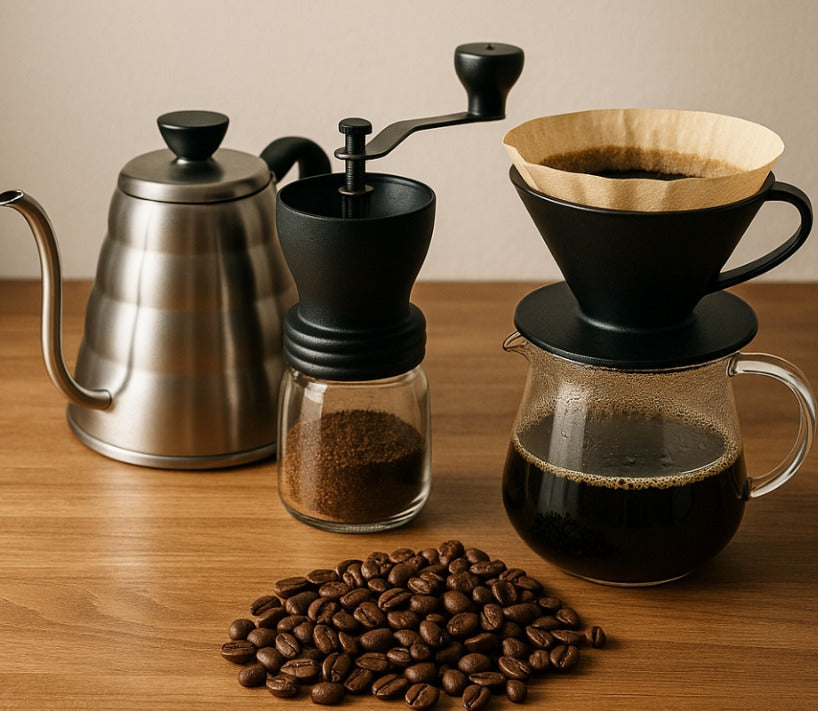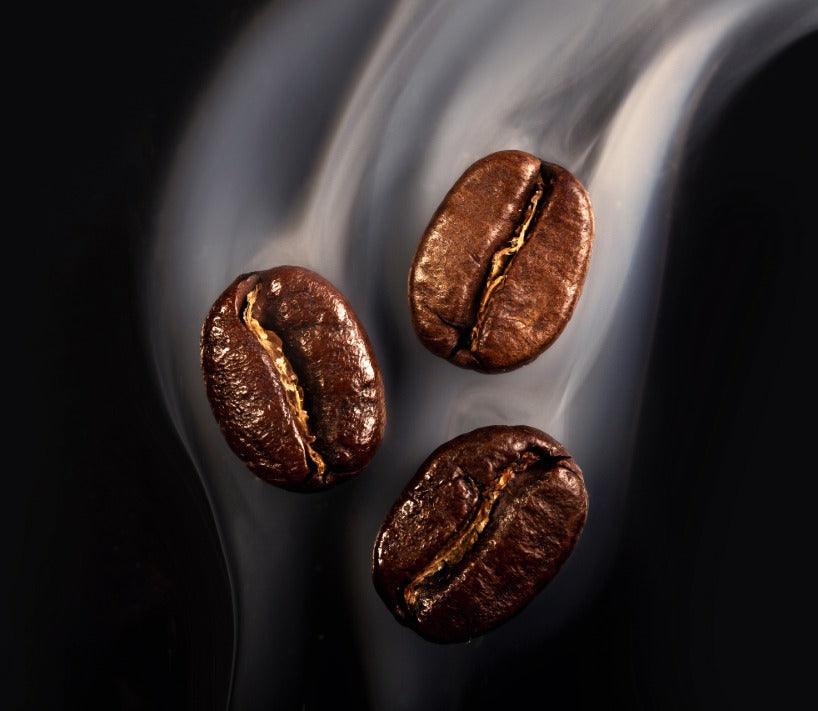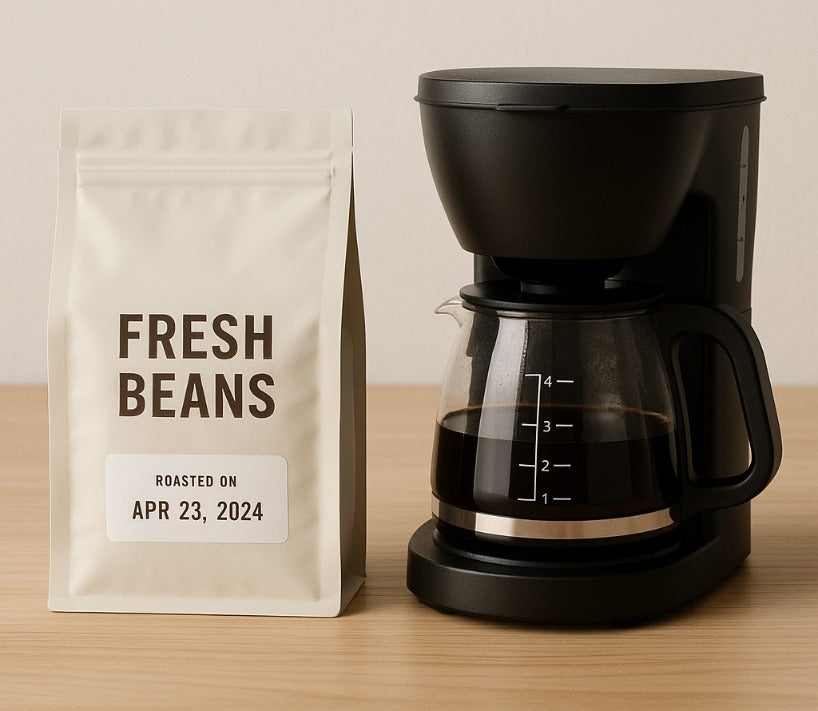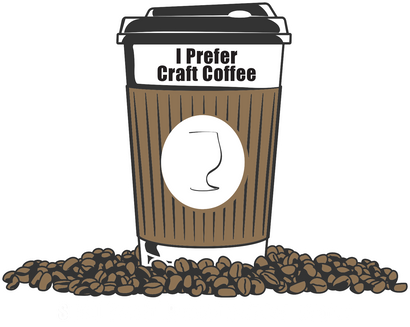Percolator Purgatory: Why Bubbling Your Specialty Coffee Is Flavor Sabotage
May 14, 2025 4 min read
Percolator Purgatory: Why Bubbling Your Specialty Coffee Is Flavor Sabotage
“Wait… is that my coffee or a science‑fair volcano?”
I once thought that the nostalgic gurgle of a percolator signaled sophisticated brewing. Spoiler alert: it was actually the death rattle of perfectly good beans. If you’ve hunted down the best tasting whole bean coffee or finally found where you can buy fresh coffee beans near me, tossing them into a percolator is like slow‑roasting a filet mignon over a bonfire – dramatic, but tragically misguided.
Today, I’m pulling back the percolator’s shiny chrome curtain to reveal why this countertop relic is the absolute worst way to brew high‑scoring specialty coffee. Buckle up for some boiling‑hot truths, a dash of humor, and plenty of practical takeaways so you can keep enjoying the best craft coffee at home without the bitter aftertaste of regret.
1. Percolator 101: The Gurgling Relic That Just Won’t Quit
A percolator looks harmless enough: water bubbles up through a center tube, rains down over a bed of coffee, drips back into the main chamber, and then… climbs the tube again. On repeat. Translation: the same water‑turned‑coffee is re‑boiled over and over, a caffeinated Groundhog Day. In the 1880s, that was innovative. In 2025, it’s culinary malpractice—especially if you’ve splurged on best small batch coffee or best espresso beans for your morning ritual.
2. Boiling Point: Coffee + 212 °F = Flavor Free‑Fall
Specialty coffee’s sweet spot is 195 – 205 °F (about 90 – 96 °C). Above that, you hit the “volatile compound graveyard.” Here’s what happens once the thermometer crosses 212 °F in your percolator:
-
Volatile aromatics—think jasmine, citrus, berry—evaporate. They literally steam away before your nose gets the chance to enjoy them.
-
Delicate acids break down, turning bright, fruity notes into a dull, flat cup.
-
Bittering compounds (tannins, chlorogenic acid lactones) rush out like shoppers on Black Friday. Over‑extraction skyrockets Total Dissolved Solids, giving you that mouth‑drying astringency some folks politely call “robust.”
In short, boiling equals flavor erasure. And because percolators recirculate already‑extracted coffee, each cycle pushes extraction past the point of no return.
3. High‑Scoring Beans in a Boil‑a‑Thon: A Tragedy in Three Acts
Act I: The Fragrance Fade
You bought best specialty coffee online, maybe a washed Ethiopian scoring 88+ with tasting notes of peach and florals. By the time the percolator’s first surge reaches its peak, half of that fragrant bouquet is gone—literally evaporated into kitchen airspace.
Act II: The Acid Crash
Fruit acids (malic, citric) give coffees their sparkling clarity. When they’re destroyed by rolling boils, the cup collapses into a dull muddiness—good luck impressing friends who love good coffee to drink black.
Act III: The Bitter Blitz
Chlorogenic acids break down into caffeic and quinic acids, spiking bitterness and that “fuzzy” tongue feel. Pair that with astringent tannins, and the final cup tastes as if someone steeped burnt toast.
4. Myth‑Busting: “But My Grandparents Swore by Percolators!”
Sure—when the alternative was freeze‑dried instant crystals. They weren’t chasing single‑origin microlots or entering “best coffee online” in search bars. Today’s high‑scoring coffees command premium prices precisely because of nuanced flavors percolators annihilate.
5. Real‑World Taste Test (Anecdotal but Ouch‑Level Accurate)
I brewed the same Kenyan AA two ways:
| Method | Temp Control | Brew Time | Flavor Result |
|---|---|---|---|
| Modern pour‑over | 202 °F | 3:30 | Vibrant citrus, black‑currant, honey finish |
| Stovetop percolator | 212 °F+ (re‑boiled) | 8:00 + | Bitter grapefruit pith, burnt caramel, empty sadness |
Same bean, two totally different cups—one that sings, one that screams.
6. But Wait, There’s More Wrong with Percolators
-
Sediment Soup: Most percolators use coarse baskets with no paper filter, so micron‑size fines land in your mug. That gritty sludge keeps extracting as you sip, getting harsher by the minute.
-
Over‑caffeination? Ironically, you may think percolated coffee tastes “strong” because it’s bitter, yet some caffeine degrades at boiling temps. So you endure the bite without proportionally higher buzz.
-
Energy Vampire: Keeping water at a rolling boil for 7 – 10 minutes is wildly inefficient compared to most modern methods.
7. “Okay, Got It—What Should I Do?”
I promised no sales pitch, so here’s a free mini‑guide to honor those precious beans:
-
Temperature Control Rules All. Whether you’re into classic French press or sleek espresso machines, aim for that 195‑205 °F sweet spot.
-
Single‑Pass Extraction. Methods like pour‑over, AeroPress, and batch brew let fresh water contact grounds once, then exit. No recirculation, no flavor death spiral.
-
Proper Ratios. Start with 1 g coffee to 16 g water (about 1:16) and tweak to taste. Percolators make ratio tracking nearly impossible.
-
Fresh Grind, Always. Burr‑grind just before brewing to maximize aroma retention—crucial if you’ve just invested in the best craft coffee online.
-
Track Your Roast Date. Those “present for coffee lovers” beans lose peak flavor within weeks. Brew them right, and promptly.
Your Flavor Future, Upgraded
By ditching the percolator, you rescue complex florals, sparkling acidity, and sugary sweetness hiding inside high‑quality beans. Imagine a morning cup so good you skip milk and sugar. Your friends might question what wizardry delivered such clarity (hint: not a bubbling chrome geyser).
Armed with temperature smarts and a better brew method, every sip of that top coffee delivered to your door can showcase terroir, processing style, and roast artistry—turning daily caffeine into an ongoing tasting adventure.
So the next time someone gifts you a vintage percolator, keep it as a quirky planter or retro décor. Your beans—and your taste buds—deserve better.
Quick‑Glance Recap: Percolator Pitfalls vs. Flavor Freedom
| Percolator Pitfall | Flavor Freedom Fix |
|---|---|
| Boiling water (212 °F) nukes aromatics | 195 – 205 °F unlocks delicate notes |
| Re‑circulating brew = over‑extraction | Single‑pass extraction prevents bitterness |
| No paper filter → sediment in cup | Fine‑mesh or paper filters yield clarity |
| Long brew times waste energy | Faster methods are greener and tastier |
| “Strong” but flat bitterness | Balanced sweetness, acidity, and body |
Final Sip:
You wouldn’t simmer wine, torch chocolate, or deep‑fry matcha; why boil specialty coffee? Retire the percolator to your kitchen museum and embrace methods that honor the craft inside each bean. Whether you’re chasing the best coffee for non coffee drinkers or dialing in the best espresso beans for your afternoon pick‑me‑up, you’ll taste the difference the moment you keep those temperatures civilized.
Here’s to flavor that survives the brew—cheers to your next, percolator‑free cup!
Also in Best Coffee To Buy Online Education

Brewing The Best Coffee at Home: Stop Waiting in Line
November 03, 2025 4 min read
Learn Brewing The Best Coffee at Home with a quick Proof → Promise → Plan system: choose fresh, roast-dated beans, use a simple 1:16 recipe at 200°F, and lock a 4–6 minute routine that beats the drive-thru on taste, time, and cost.

Best Tasting Coffee At Home: Stop Buying “Deals,” Start Buying Value
November 02, 2025 4 min read
Want the Best Tasting Coffee At Home? Skip old ‘deal’ beans. Use fresh, high-scoring, air-roasted coffee and a simple 1:16 plan. This guide shows proof, a clear promise, and a step-by-step plan to order smart, brew better, and enjoy sweeter, cleaner cups—daily.

Best Coffee To Make At Home: Fresh Beans, Simple Plan
October 31, 2025 4 min read
Learn the Best Coffee To Make At Home with a tiny, repeatable system: pick fresh, high-scoring, roast-to-order beans; brew at a simple 1:16 ratio; fix cups with one change at a time. Includes a comparison table, freshness rules, and beginner-friendly FAQs.
